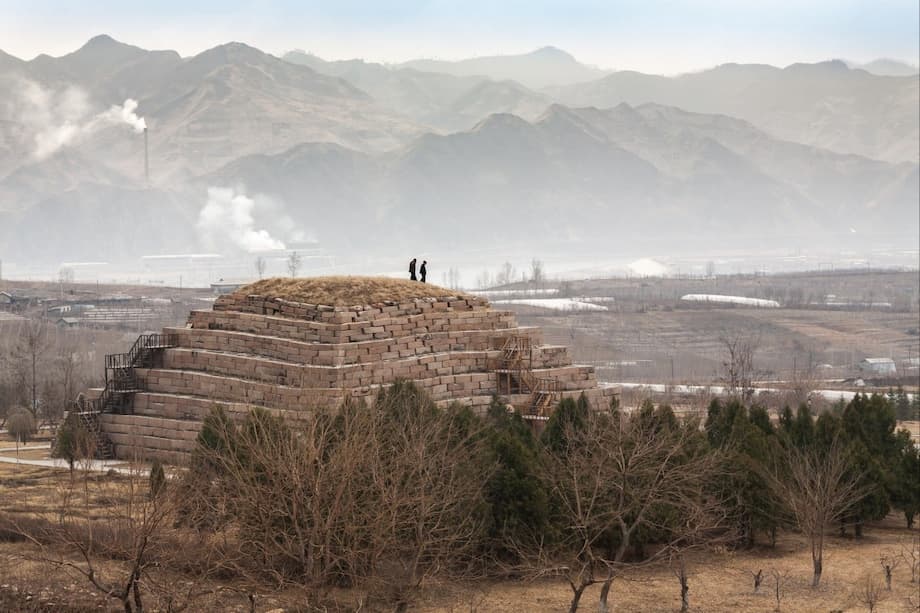Ancient Kingdoms and Modern Tensions: Why History Still Divides China and South Korea
In East Asia, the past is never just the past. The history of ancient kingdoms—Buyeo, Goguryeo, and Balhae—continues to spark fierce debate and diplomatic friction between China and South Korea. A recent call by Huang Qiang, party chief of China’s Jilin province, to clarify the history of these kingdoms has reignited a long-standing dispute, threatening to disrupt the fragile thaw in relations between the two neighbors. At stake are not only historical narratives but also questions of national identity, territorial integrity, and regional power dynamics.
- Ancient Kingdoms and Modern Tensions: Why History Still Divides China and South Korea
- What Are the Ancient Kingdoms at the Center of the Dispute?
- How Did the Dispute Over History Begin?
- National Identity and the “History Wars”
- Artifacts, UNESCO, and the Global Stage
- Technology, Tourism, and the Preservation of Heritage
- Geopolitical Stakes: More Than Just History
- Public Sentiment and the Role of Nationalism
- Efforts at Resolution and the Path Forward
- In Summary
What Are the Ancient Kingdoms at the Center of the Dispute?
The kingdoms in question—known internationally by their Korean names Buyeo, Goguryeo, and Balhae—flourished from the second century BCE to the 10th century CE in areas that now span northeastern China and the Korean Peninsula. These states played pivotal roles in shaping the region’s culture, politics, and identity.
Goguryeo (37 BCE–668 CE) was the largest and most powerful of Korea’s Three Kingdoms, controlling vast territories in Manchuria and northern Korea. Buyeo (2nd century BCE–494 CE) and Balhae (698–926 CE) were also influential, with Balhae emerging as a successor state to Goguryeo after its fall.
According to Britannica, these kingdoms developed sophisticated cultures, centralized governments, and military systems. They interacted with Chinese dynasties as both rivals and tributaries, adopting elements of Chinese culture while maintaining distinct identities.
Why Do These Kingdoms Matter Today?
For South Koreans, Goguryeo and Balhae are foundational to national history and pride. They symbolize Korea’s ancient roots, resilience, and cultural achievements. For China, these kingdoms are part of the historical narrative of its northeastern provinces, home to significant ethnic Korean populations and strategic borderlands.
How Did the Dispute Over History Begin?
The roots of the current controversy stretch back to the 20th century, when Chinese historians began framing ancient states in Manchuria as precursors to modern Chinese ethnic groups. This approach, influenced by Western concepts of race and nationhood, was designed to reinforce China’s territorial integrity and multiethnic identity.
The dispute intensified in the early 2000s with the launch of China’s Northeast Project, a government-sponsored initiative to reinterpret the history of the northeast region. The project classified Goguryeo and Balhae as local Chinese regimes rather than Korean kingdoms. This move alarmed both North and South Korea, who saw it as an attempt to appropriate their heritage and potentially lay the groundwork for future territorial claims.
South Korea responded by establishing the Goguryeo Research Foundation and protesting diplomatically. The issue also gained international attention when China registered Goguryeo sites as UNESCO World Heritage and removed references to the kingdom from its official Korean history pages.
According to the Rising Powers Initiative, the Northeast Project was not just an academic exercise but a strategic move to manage ethnic minorities and border security. For China, asserting historical claims over Goguryeo and Balhae helps legitimize its control over the region and preempt any future Korean claims, especially in the event of North Korean instability or reunification.
National Identity and the “History Wars”
The dispute over ancient kingdoms is more than a scholarly disagreement—it is a “history war” that shapes national identity and foreign policy. Academic studies, such as those published by Cambridge University Press, show that these disputes evoke strong emotions among South Koreans, including pride, anger, and resentment toward China. Exposure to Chinese claims over Goguryeo reduces Korean pride and increases hostility, especially among those with strong nationalist sentiments.
For many Koreans, the Chinese narrative is seen as an existential threat to their cultural heritage and national legitimacy. As one South Korean civic activist, Seo Kyoung-duk, explained in response to a Japanese museum using Chinese names for Balhae,
“A history museum has a duty to present accurate history to visitors. Inaccurate portrayals of history overseas could legitimize these false claims and must be corrected.”
China, on the other hand, views the inclusion of these kingdoms in its history as essential for maintaining internal stability and preventing separatist sentiments among its border minorities.
Artifacts, UNESCO, and the Global Stage
The debate over history is not confined to textbooks or diplomatic statements—it plays out in museums, auctions, and international organizations. In 2025, a rare golden seal believed to have been conferred by China’s Western Jin dynasty upon a Goguryeo marquis sold for a record sum at a Hong Kong auction. The artifact, inscribed with “Marquis of Goguryeo, Aligned with Righteousness, Conferred by the Jin Dynasty,” is a tangible reminder of the complex relationships between ancient Korean kingdoms and Chinese dynasties.
Such artifacts are highly prized by collectors and historians, as they offer evidence of political alliances, cultural exchange, and the shifting balance of power in early East Asia. The sale of these items often reignites debates over their rightful ownership and historical significance.
UNESCO World Heritage status has also become a battleground. Both China and Korea have sought recognition for sites linked to Goguryeo and Balhae, each framing them as part of their own national heritage. South Korea, in particular, has invested heavily in preserving and promoting its ancient sites, with over 50 entries on UNESCO’s lists, including the Baekje Historic Areas and the Annals of the Joseon Dynasty—the world’s longest uninterrupted dynastic chronicles.
Technology, Tourism, and the Preservation of Heritage
South Korea has embraced technology to connect its citizens and the world to its ancient heritage. Smart tourism initiatives, such as the Smart Town Challenge in Gongju and Buyeo, use digital platforms to enhance visitor experiences at historic sites. Augmented reality, online guides, and community involvement are helping to revitalize local economies and strengthen cultural identity.
However, the promotion of heritage is not without challenges. Population decline in historic cities and generational gaps in technology adoption threaten the sustainability of these efforts. South Korea’s Special Act on Preservation, Management and Use of World Heritage requires local governments to involve residents in heritage protection, but ensuring full participation remains a work in progress.
Geopolitical Stakes: More Than Just History
Behind the academic and cultural debates lies a deeper geopolitical struggle. China’s reinterpretation of history is seen by some analysts as a preemptive move to justify intervention in North Korea should the regime collapse. By framing ancient kingdoms as Chinese, Beijing could claim a historical right to intervene in the region, especially if Korean reunification brings a Western-aligned state to its border.
As the Milwaukee Independent reports, the Northeast Project was part of a broader strategy to maintain North Korea as a buffer state and prevent the spread of Western influence. The possibility of a unified Korea, backed by the United States, is a major concern for Chinese policymakers.
North Korea, for its part, has responded to the dispute by banning Chinese movies and internal lectures that accuse China of distorting Korean history. The regime is keen to prevent any narratives that could undermine its legitimacy or fuel suspicion of its powerful neighbor.
Public Sentiment and the Role of Nationalism
The “history wars” have fueled rising anti-China sentiment among young South Koreans. Surveys and media reports indicate that historical disputes, along with other issues such as trade and cultural appropriation, have contributed to a growing sense of mistrust and resentment toward China.
These sentiments are not limited to South Korea. North Koreans, too, are wary of Chinese claims over their history, even as their government maintains close ties with Beijing. The banning of lectures critical of China’s historical narrative reflects the regime’s desire to control information and prevent the spread of dissent.
Efforts at Resolution and the Path Forward
Despite periodic flare-ups, China and South Korea have at times sought to manage their differences. After the Northeast Project concluded in 2007, both sides agreed to prevent historical controversies from harming their broader relationship. China promised not to use the revised history in official textbooks, and diplomatic channels remain open for dialogue.
Scholars argue that recognizing and respecting each nation’s sense of “psychological ownership” over history could help reduce tensions. Promoting an appreciation of cultural interconnections, rather than exclusive claims, may pave the way for greater understanding and peace in the region.
Yet, as the recent remarks by Jilin’s party chief and the ongoing disputes over museum exhibits and world heritage sites show, the past remains a potent force in East Asian politics. The struggle over ancient kingdoms is not just about history—it is about who gets to define the present and shape the future.
In Summary
- The history of ancient kingdoms like Goguryeo, Buyeo, and Balhae remains a source of tension between China and South Korea, influencing diplomacy, identity, and regional security.
- China’s Northeast Project and recent official statements have reignited disputes over whether these kingdoms are part of Chinese or Korean history.
- Artifacts, UNESCO heritage sites, and museum exhibits have become flashpoints in the “history wars,” reflecting deeper struggles over national pride and legitimacy.
- South Korea has responded with research initiatives, diplomatic protests, and technological efforts to preserve and promote its heritage.
- The dispute has geopolitical implications, with China seeking to secure its borders and preempt potential claims in the event of Korean reunification.
- Public sentiment in both Koreas is shaped by these historical debates, fueling nationalism and mistrust toward China.
- Efforts at dialogue and mutual respect for cultural heritage are ongoing, but the legacy of ancient kingdoms continues to shape the politics of East Asia today.




